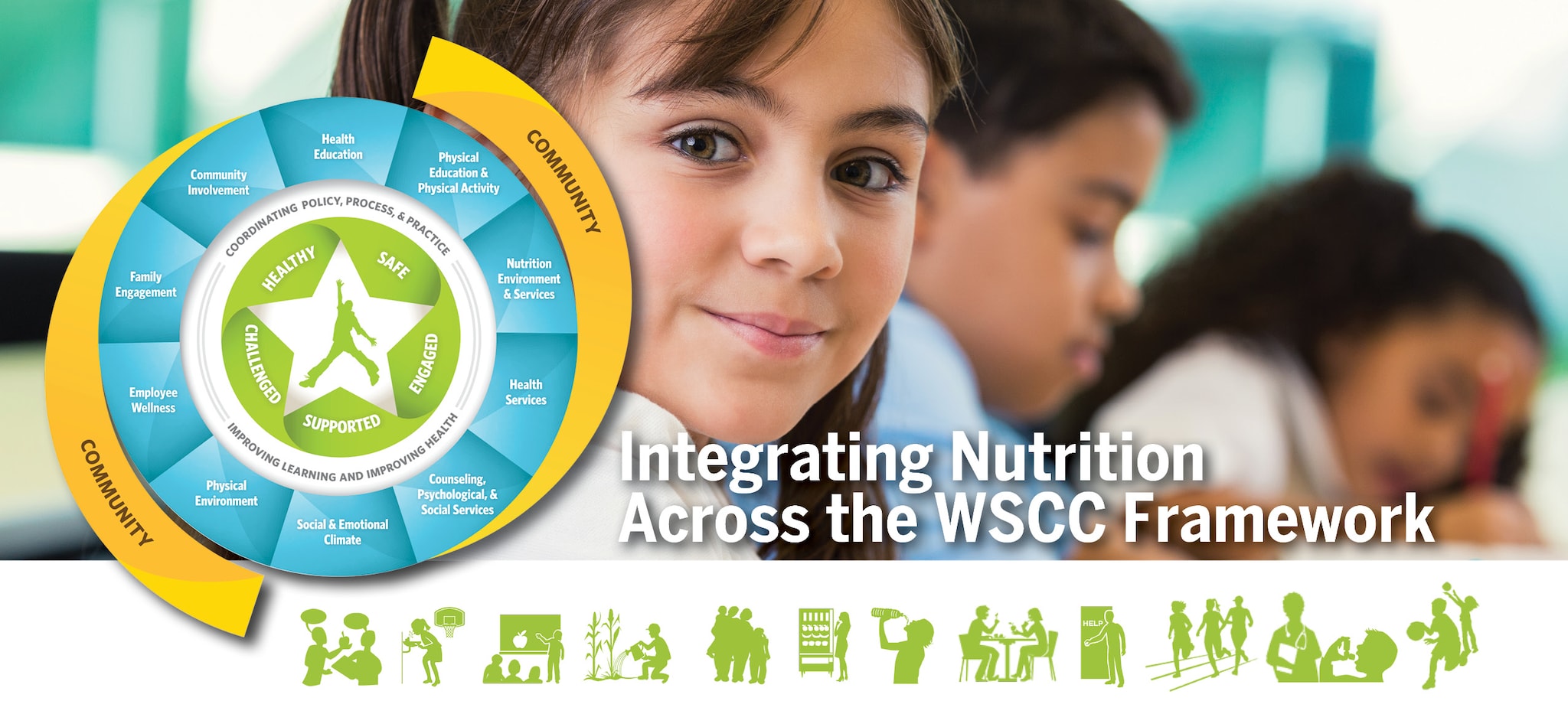At a glance
Learn about evidence-based ways to use CDC's Whole School, Whole Community, Whole Child (WSCC) framework for school nutrition services.

Nutrition integrated across the WSCC framework
Schools should provide students and staff with access to healthy foods and beverages, consistent messages about nutrition, and opportunities to learn about and practice healthy eating. Here are some evidence-based strategies and promising practices for using the Whole School, Whole Community, Whole Child (WSCC) approach to promote nutrition education and healthy eating behaviors across the school setting.
Nutrition environment and services
- Allow students sufficient time to eat their meal.
- Provide options for children with special dietary needs, per federal regulations.
Physical education and physical activity
- Ensure that students have access to free drinking water in the gym and other physical activity areas.
Health education
- Include nutrition education as part of a comprehensive health education curricula.
- Ensure that health education curricula align with the Dietary Guidelines for Americans 2015–2020.
- Address the healthy eating behavior outcomes in CDC’s Health Education Curriculum Analysis Tool.
Community involvement
- Set up joint-use agreements for shared spaces, such as community kitchens and school gardens.
- Link schools with out-of-school programs that promote healthy eating.
Family engagement
- Encourage schools to provide materials about school nutrition programs and nutrition education in languages that students and parents speak at home.
Employee wellness
- Encourage school staff to model healthy eating behaviors.
- Ensure that school staff have access to healthy foods and beverages in faculty vending machines.
Physical environment
- Give students access to safe drinking water across the school building or campus.
- Give students the opportunity to learn how to grow food—for example, by creating a school garden.
Social and emotional climate
- Ensure that food is never used as a reward or punishment.
- Make sure that students who receive free or reduced price meals are not identified.
Counseling, psychological, and social services
- Train school staff to recognize signs of eating disorders and disordered eating.
- Ensure that school staff can confidentially refer students to appropriate staff members for follow-up and referral to primary care providers as needed.
Health services
- Manage the nutritional needs of students with chronic health conditions, such as food allergies or diabetes.
